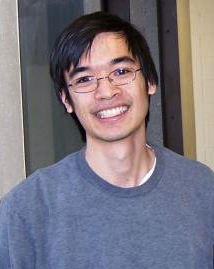
Terence Tao
It may not be for the majority of learners but it remains an important goal of math education in the basic level to hone future mathematicians who in turn are expected to produce good mathematics. This post presents Terence Tao‘s personal thoughts on what good quality mathematics could mean. Terence was a child prodigy. When he was 24, he was promoted to full professor at UCLA and remains the youngest person ever appointed to that rank by the institution. Terence Tao currently holds the James and Carol Collins chair in mathematics at the University of California, Los Angeles. He was one of the recipients of the 2006 Fields Medal.
What I like about Terence’ descriptions of good quality mathematics is that it is possible at K-12 levels for students to actually produce good mathematics within the universe of their knowledge given the right motivation and challenge, the appropriate activity, enough opportunity, etc. I think students have the right to participate in the production of mathematical knowledge. Activities such as problem solving, mathematical investigations, and modelling are all about training students to “produce” good mathematics.
Good mathematics could refer to any of the following:
- Good mathematical problem-solving (e.g. a major breakthrough on an important mathematical problem);
- Good mathematical technique (e.g. a masterful use of existing methods, or the development of new tools);
- Good mathematical theory (e.g. a conceptual framework or choice of notation which systematically unifies and generalises an existing body of results);
- Good mathematical insight (e.g. a major conceptual simplification, or the realisation of a unifying principle, heuristic, analogy, or theme);
- Good mathematical discovery (e.g. the revelation of an unexpected and intriguing new mathematical phenomenon, connection, or counterexample);
- Good mathematical application (e.g. to important problems in physics, engineering, computer science, statistics, etc., or from one field of mathematics to another);
- Good mathematical exposition (e.g. a detailed and informative survey on a timely mathematical topic, or a clear and well-motivated argument);
- Good mathematical pedagogy (e.g. a lecture or writing style which enables others to learn and do mathematics more effectively, or contributions to math- ematical education);
- Good mathematical vision (e.g. a long-range and fruitful program or set of conjectures);
- Good mathematical taste (e.g. a research goal which is inherently interesting and impacts important topics, themes, or questions);
- Good mathematical public relations (e.g. an effective showcasing of a mathematical achievement to non-mathematicians, or from one field of mathematics to another);
- Good meta-mathematics (e.g. advances in the foundations, philosophy, history, scholarship, or practice of mathematics);
- Rigorous mathematics (with all details correctly and carefully given in full);
- Beautiful mathematics (e.g. the amazing identities of Ramanujan; results which are easy (and pretty) to state but not to prove);
- Elegant mathematics (e.g. Paul Erdos’ concept of “proofs from the Book”; achieving a difficult result with a minimum of effort);
- Creative mathematics (e.g. a radically new and original technique, viewpoint, or species of result);
- Useful mathematics (e.g. a lemma or method which will be used repeatedly in future work on the subject);
- Strong mathematics (e.g. a sharp result that matches the known counterexamples, or a result which deduces an unexpectedly strong conclusion from a seemingly weak hypothesis);
- Deep mathematics (e.g. a result which is manifestly non-trivial, for instance by capturing a subtle phenomenon beyond the reach of more elementary tools); Intuitive mathematics (e.g. an argument which is natural and easily visualisable);
- Definitive mathematics (e.g. a classification of all objects of a certain type; the final word on a mathematical topic);
You can find the link to the complete paper in Terence Tao’s WordPress blog. You may also want to read Terence’s books.


